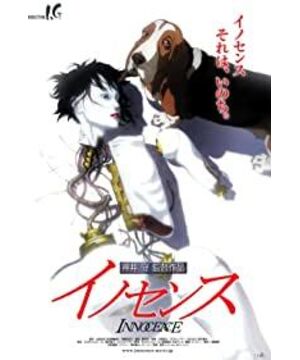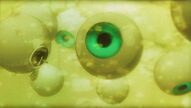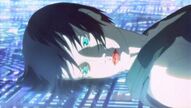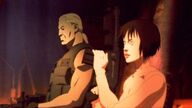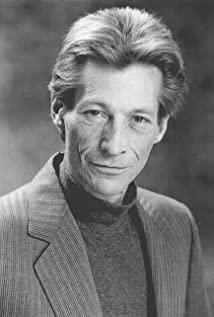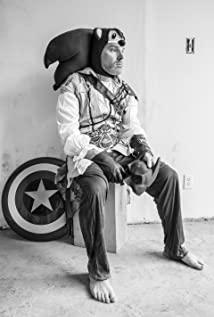Going alone in the world , my heart is self-cleaning, without desire or demand, like the elephant in the forest. -"Hatred" Chapter 14 of the "Nebodo Sutra".
"Is this an animation created by me?" After watching the finished "Ghost in the Shell 2: Innocence" ("Ghost in the Shell 2: Innocence" hereinafter referred to as "Innocence"), the director Also dumbfounded. He couldn't believe that his production team had actually made a work that made him, one of the "big five animation giants", Oshii Mamoru, also had to sigh. It is not in vain that the producer has invested up to 2 billion yen in production costs. .
Born in 1951, Mamoru Oshii, immediately after graduating from university in 1976, joined the animation production company "Dragon's Son" in Tokyo to work until now. With a series of unique animation works such as "Fortune Boy", "Angel's Egg", "Mobile Police" and so on, they are widely known in Japan, and Oshii Mamoru, the director of these works, has also attracted much attention. Four years ago, the creative team of "Ghost in the Shell" (hereinafter referred to as "Ghost in the Shell") approached him, hoping that he could take over the production of the animated film "Ghost in the Shell" theatrical version. Oshii Mamoru readily agreed and showed great enthusiasm for the work.
However, what made Oshii Mamoru at that time totally unpredictable was that the animated film "Innocent" (March 6, 2004), which was released in Japan afterwards, failed to reach the expected sales, so the producer "Production IG" On the verge of bankruptcy. He would never have thought that this film would be nominated for the Palme d'Or at the Cannes Film Festival that year (the 57th). He has previously stated publicly that because of cultural barriers, foreigners immersed in Western culture may find it difficult to understand Eastern cultural concepts such as "reincarnation", "puppet", and "enlightenment" in the works. It is for this reason that Oshii Mamoru declined the invitation from Hollywood on the other side of the ocean.
The plot of "Innocent" inherits the previous work, and tells the story of the "Public Security Class 9" investigation of the humanoid intelligent robot runaway and murder. The paradox is that robots are produced to serve humans. Under the constraints of the "Three Principles of Robots", it is impossible for robots to kill people. After the partner Suzi disappeared, the protagonist Bart and his new partner Dogusa traced the hidden details of the robot runaway incident. After going through dangerous incidents such as gang shootouts and infiltrating robot manufacturing companies, Bart finally revealed the inside story of the robot runaway incident-the so-called "rogue robots" were actually made by sacrificing innocent children, and these The child was abducted by the gang.
"Innocent" is indeed a work full of mystery. Religious rituals, labyrinths and sculptures are used extensively in the film as the narrative background. The dialogues between the characters are also quoted from famous sayings and masterpieces. Zen sayings and verses can be seen everywhere. Following the plot, the director uses the words and actions of the characters to deeply explore philosophical issues related to memory and self, human nature and consciousness, death and immortality, religion and technology.
Soon after the beginning of the film, with the help of Bart and Togusa discussing the missing element, the director threw out his thoughts on memory and consciousness, self and existence to the audience. "Brain" (brain) and "ghost" (spirit) are not the same thing as "that guy" (self). They are meant to explore the relationship between body, consciousness and self.
In the plot setting of the film, humans can replace the original limbs and organs of the body with mechanical parts through surgery, which is called "prostheticization." Then, after all the limbs and organs of the body are replaced with mechanical parts, will the existence of the self continue? What is the difference between the self at this time and the self before replacing the mechanical parts? This is the core issue of the "Ship of Theseus".
Immediately afterwards, the film continued to discuss the issue of the belonging of the self after materialization. If the self after prosthesis becomes a thing, after it is private, can it be taken back to the public. If the unowned property can be collected by the state into public ownership, then why can't it be the prosthetic body that stores the memory—that is, the materialized self.
Then, the director took us to the robot planing room through the plot. When the staff in the dissection room explained the results of the anatomy to Bart and Saguto, they "by the way" discussed the original intention of human beings to make humanoid robots, thus leading the debate about the difference between humans and robots into the ethical field. In the plot, it is implied that the "rogue robot" is related to the child.
If the director’s discussion of philosophy so far has only stayed on the language of the characters, then the subsequent plot "Supermarket Night Fight" uses the actions of the characters to explore the relationship between memory, hallucinations and consciousness. At night, Bart, on his way home, came to a roadside supermarket to shop. After entering the supermarket, he felt that the surrounding atmosphere was a bit strange, and immediately realized that he was in the "Sura Field". Bart moved quickly, drew his gun and fired at the gangster. After a burst of gunpowder, everything returned to calm, which surprised the viewers.
Later, through the plot, we learned that Bart is not only a "prosthetic person" or an "electronic brain", that is, the brain is replaced by an electronic original. Gunfighting with criminals is an illusion caused by a virus invading the electronic brain. The doubts in the viewer's mind seem to be solved. However, after careful consideration, everything calm at this time seems to imply that the fierce gun battle at that time was an "illusion." A sense of sorrow suddenly arises from thinking about it this way. The director just wants to borrow this passage to show us the "feeling of absence" in our hearts when memories are transformed into hallucinations-as if we have just lost part of our memories.
In the film, such paragraphs discussing philosophical issues abound. When Bart and Togusa were investigating a robot manufacturing company, they met a person who was "prosthetized" all over. The director also expressed through his mouth that after the intervention of technology, the possibility of human beings achieving immortality has been greatly improved.
If the whole body is transformed into a prosthetic body, the brain will also become an "electronic brain", and even the personality will be uploaded to the data cloud as data-is such a life with an "immortal body" the "immortality" we dream of? After the personality is digitized, how will we be different in the vast ocean of information? If personality can really be digitized, is it really a wise move to abandon the flesh and blood that has the "feel of alive"? In fact, Bart’s missing old partner Suzi abandoned his body, turned himself into data, and uploaded it to the data cloud. In the depths of the data, Mo Zi has a glimpse of the changes in the world. Suzi learns that Bart is in trouble, and the incarnation robot descends from the sky, helping Bart to turn the danger out.
Regarding the various questions that appeared in the movie, the director did not give us precise answers ready. However, he seems to be using the soundtrack "The Puppet Ballad" and the verse-"Life and death come and go, the shed head puppet. When the line is broken, it will fall to the ground"-telling us that the body that loses the "ghost" is just a floating body. Empty "puppets". And even if she loses her body like a primordial child, even if she comes and goes freely, it is not a lack of her life.
The director just wants to convey his thoughts about "ghost" (spirit) and "shell" (shell) to us through this movie. "When my pet died, I felt a huge hollow in my heart." Oshii Mamoru publicly talked about the creative motives of "Innocent" in an interview before the film was released. "Even when my relatives died, I didn't Feeling like this". The "emptiness" felt by the director is precisely the lack of emotion, the product of imbalance in the body and mind.
The relationship between "ghost" and "shell" is in fact the "body-body relationship" proposed by the modern Japanese philosopher Yuasa Yasuo, which is the subject of this Japanese animated film that first involved philosophical speculation. Oshii Mamoru said, "At that time, I understood that pets are an extension of our body." "It is the death of pets that made me understand. Based on this motivation, I made this animation." Oshii Mamoru believes that the "mind" and "body" of Japanese living in contemporary society are not balanced, just as the behavior of keeping pets is just such a manifestation. And the death of the pet made him deeply understand what the lack of "heart" is all about. The contradiction between "ghost" and "shell" in "Innocent" is the epitome of the "imbalance of mind and body" in contemporary Japanese hearts.
Before Oshii Mamoru took over the production of "Ghost in the Shell" is by no means such a mysterious work full of Zen language. Its story is full of modernity. It tells that in 2029 AD, computers, AI and the Internet dominate people's lives. The human body and thought eventually developed into a mechanical prosthetic body and an electronic brain. Humans and machines are merged, and the boundaries have become blurred.
"Ghost in the Shell" uses a fine description of future technology and a gloomy tone of work, which is incompatible with the atmosphere of popular works at the time. The profound plot shocked the hearts of readers and soon became the most popular in the comics industry at that time. IP. The Japanese animation industry sensed business opportunities and produced TV animation and the first theater version of TV animation.
Unlike the second part, where Motozi changed from human beings to data, the first part tells the story of artificial intelligence as data. The first part of "Ghost in the Shell" discussed the issue of "ghost". Are human beings the only existence with consciousness? Is the AI after consciousness human?
Early Japanese robot animations were not such animations that liked to explore profound philosophical issues. In 1953, "Astro Boy with Iron Arms" appeared in the eyes of the Japanese public. The robot "Astro Boy" not only has the appearance of a child, but also has a child-like innocent and kind heart.
It wasn't until "Iron Man 28" produced by Director Yokoyama Kokuki in 1963 that the robot was huge, and one person held a controller and controlled it. "The huge robot is where the Yamato nation's complex lies." Oshii Mamoru realized that this huge robot is an ideology. It is Japan’s blind worship of modern technology with great power. Surrounded and entered into modern life".
The image of the giant robot has grown up in the love of Japanese audiences, and even the image of "Gundam", a robot that is well-known in Japan, has appeared. The image of the robot in the Japanese animation should be like a copper wall and iron wall that protects humans from evil things like a patron saint. Such a turning point in this image began with "EVA" (hereinafter referred to as "Evangelion") produced by animation director Anno Hideaki.
"Japanese animated films are exquisite crafts", in the company meeting, the colleague Anno Hideaki spoke highly of Oshii Mamoru. For Oshii Mamoru, Anno Hideaki is one of the few people who deserves admiration. If Japanese animation is a handicraft, then people such as Hayao Miyazaki and Hideaki Anno who make handicrafts should be called "artisans" without any shame.
The admiration of Anno Hideaki can be seen in his works. Anno Hideaki's animation "Neon Genesis Evangelion" is a "milestone" work recognized by the Japanese animation industry, and has been talked about since it was released in 1995. The animation relies on the "Bible" to tell the story of 3 children named "Evangelion" driving "universal humanoid decisive weapons" or giant robots against the invasion of the alien monster "Apostles" in the universe in 2015.
Hideaki Anno used the "stream of consciousness" method to narrate the story, and borrowed a lot of religious and philosophical imagery in the animation, which caused a huge "phenomenal" response and impact in Japanese society. Therefore, the Japanese animation industry praised "Neon Genesis Evangelion" as " One of the greatest animations in Japanese history".
From "Astro Boy" to "Iron Man 28", from "Neon Genesis Evangelion" to "Ghost in the Shell", the images of robots in Japanese animation have been constantly changing. What caused the change in the image of robots in Japanese animation? Haruki Murakami once said that the "Great Hanshin Earthquake" and the "Sarin Gas Incident of Tokyo Subway" had a great impact on the Japanese. Probably from then on, the Japanese people began to reflect on the dark sides of modern society.
Japanese people realize that technology is not a panacea. In the face of natural disasters and the evils of human nature, tiny human beings are as powerless as technology, and even technology itself has its own disadvantages that cannot be changed. In Japanese culture, there is an oriental spiritual tradition of "inwardly" seeking solutions when encountering setbacks. This tradition is embedded in the inner language of Japanese animation art. Therefore, the image of robots in Japanese animation continues to "internalize", from the "child-like automatic type" that is external to human beings to the "external remote control type", and then into the "entry type internal control type" until "Nothing The "human self-transformation type" in "Sin", the relationship between humans and robots in Japanese animation is getting closer and closer, and even merged together.
In fact, in "Innocent", the contradiction between man and machine is essentially regarded as the contradiction between man and self. This contradiction was finally solved temporarily in Suzi's Zen-style self-abandonment. However, what Suzi gave up was not only his own body, but also the essence of human being-"humanity", which is also the inevitable price of pursuing "immortality".
View more about Ghost in the Shell 2: Innocence reviews


